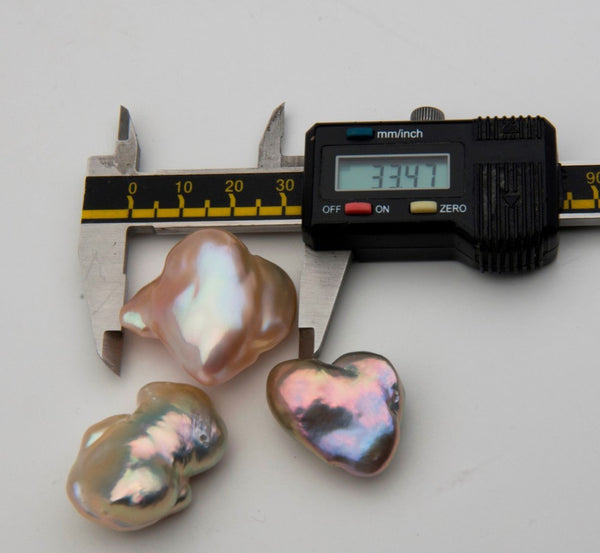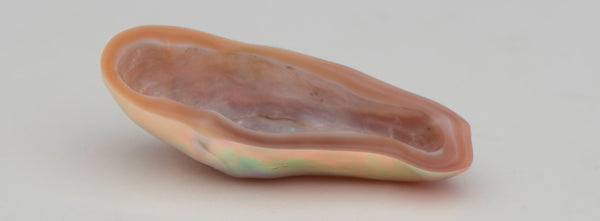Soufflé Pearls: Some things I bet you didn’t know
One of the most popular types of pearl that we’ve been bringing in over the past year have been those lightweight, hollowed out pearls popularly known as soufflé. The name, coined by friend and fellow pearl expert Jack Lynch of Sea Hunt Pearls, conjures up the image of the namesake puffy French desert.
But what is a soufflé pearl? Is it the product of brilliant pearl farmer innovation or something else?
The name soufflé comes from the French verb souffler, which in English translates to blow or to inflate. Although this may not have factored in to the coining of the term, it’s actually even more accurate than most could have ever guessed.
Soufflé pearls are grown by inserting a substance into an existing pearl sac that looks much like some sort of earthen material – it sort of looks like mud. When the pearls are harvested, they are drilled, cleaned and voilà – a lightweight, hollow pearl.
A few two-toned pearls
But guess what? That was not the original intention.
The earthen material that is inserted into the existing pearl sac – a nacre-producing pouch inside a freshwater mussel from which a pearl was already harvested – is inserted to “souffler” the pearl sac. The material, which starts out dry, soaks up the surrounding moisture and begins to expand. As the material expands, the pearl sac also expands. The pearl sac continues to deposit nacre over this now-much-larger nucleus – the birth of a soufflé pearl.
Soufflé pearls tend to be grow quite large
After harvesting this pearl, the farmer now has a mussel with a pearl sac much larger than usual. In this pearl sac he is then able to place a large bead – the pearl sac must be large enough to envelope the entire bead – and grow a large, bead-nucleated pearl. Those large, bead-nucleated pearls go by names such as giant fireballs, ripples, Ming Pearls and Edisons.
In China, pearls are sold by weight, so some of the earliest soufflé pearls were harvested as quickly as possible to mostly be discarded, although some have made the way into the uber-low-end market (check out this disturbing image). When the pearls were cleaned out, they lost the value. Or so they thought! The soufflé pearls that were left in the shells long enough to attain a thick coating of nacre exhibit some of the strongest, most iridescent colors we’ve ever seen in freshwater pearls and now command a premium in the wholesale trade.
More colorful soufflé pearls
One of the most common questions I hear about soufflé pearls is whether or not they are durable - they are hollow so some worry that if the pearls are dropped, they might break. To answer that question, we cut a large, 34 mm soufflé pearl in half this week. The nacre thickness (pictured below) is more than 2 mm in the thinnest areas and more than 4 mm in the thickest – thicker than the nacre found on almost any beaded pearl produced today. It would take one part hammer and two parts intention to smash one of these beauties.
A giant, 34 mm soufflé pearl sawn in half











Where can I buy soufflé pearls?
Hi,
please tell my when can I buy souffle pearl beads for my handmade?
Thanks )
The colors are completely natural, which is one of the things that make these rare pearls so special.
Take a look at the last photo above to see the nacre thickness. A thickness of 2-4 millimeters is thicker than just about any other type of pearl grown today, which makes them very durable. Can they be smashed? Sure. So can any type of pearl.
Scuffle` pearls : beatiful, but not for me. Hollowed out.? How, by who?
I love the colors ( hopefully not not dyed ). Something about a hollow pearl just seems so wrong! How well do they wear? What is the nacre like if they hollowed out? Sorry I just do not trust these pearls will for last generations. Convince me fellows.
They feel almost strangely light, especially given their size. It’s possible to go big-big-big with these.
Leave a comment